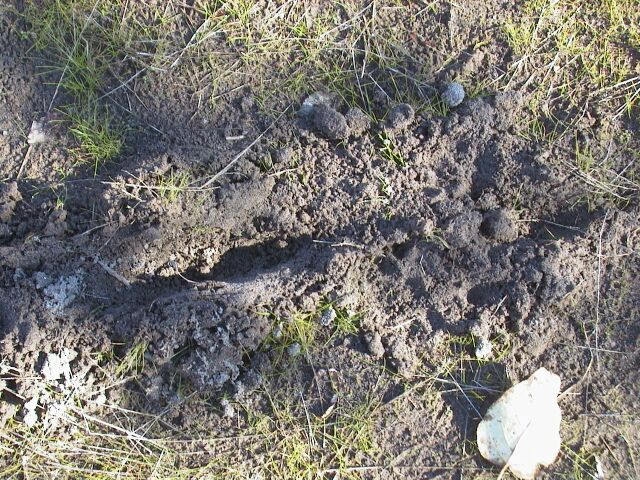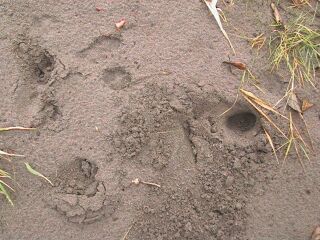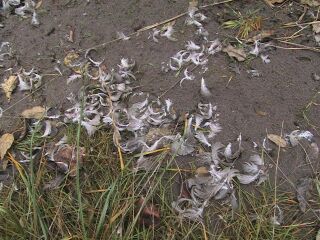Tracks
It is instructive to view tracks under different conditions. The track looks different as the conditions change (e.g., dry versus wet sand or soft mud versus hard crust) or the stride shifts from direct register (hind print directly on top of front print) to a side trot where both the front and hind feet are visible. Look for the shallow "v" formed by the interdigital pad to distinguish the red fox from coyote and other canines.
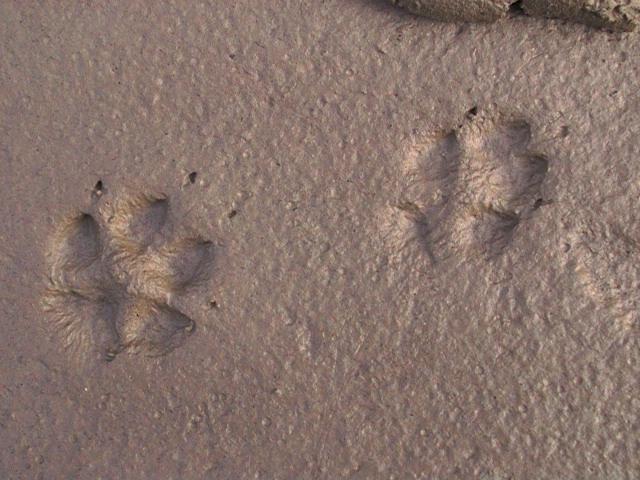
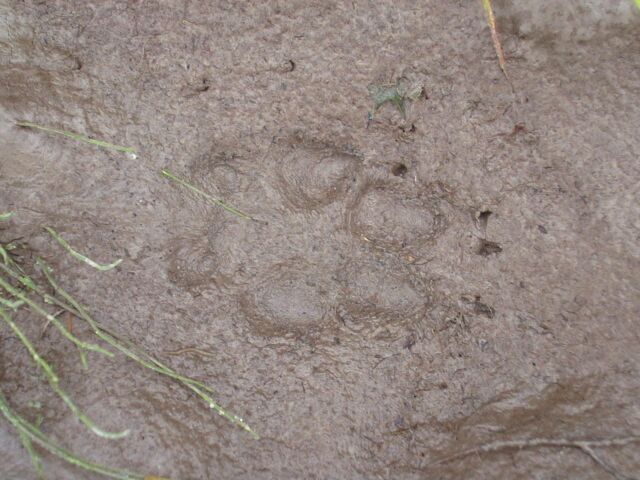

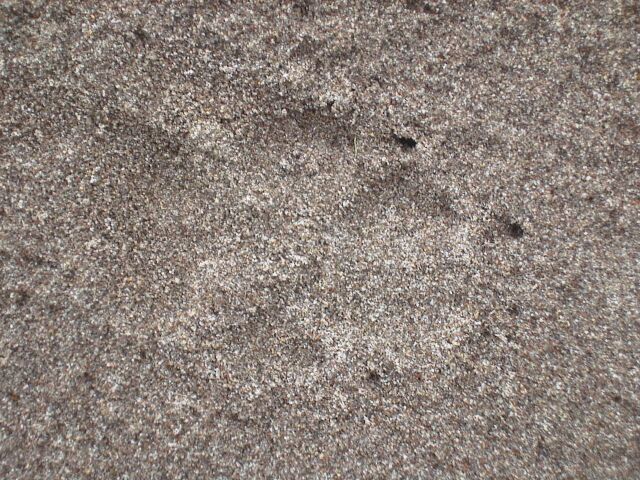
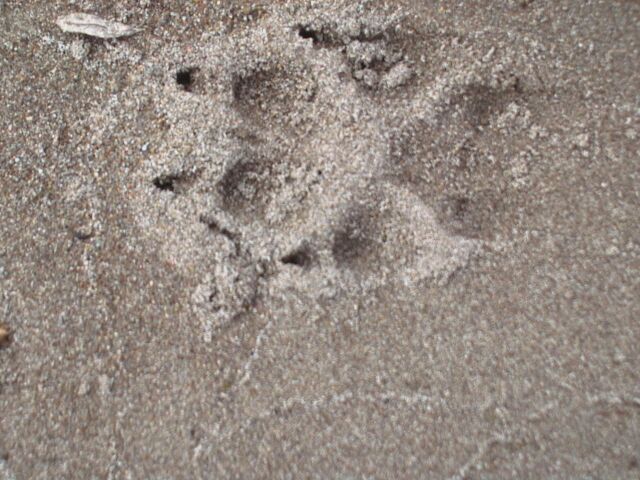
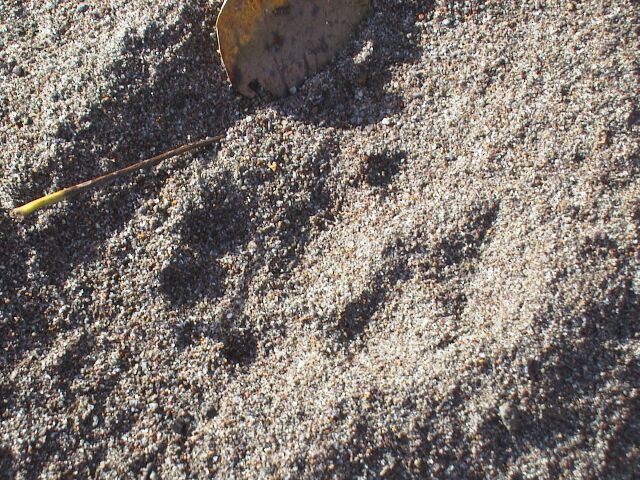

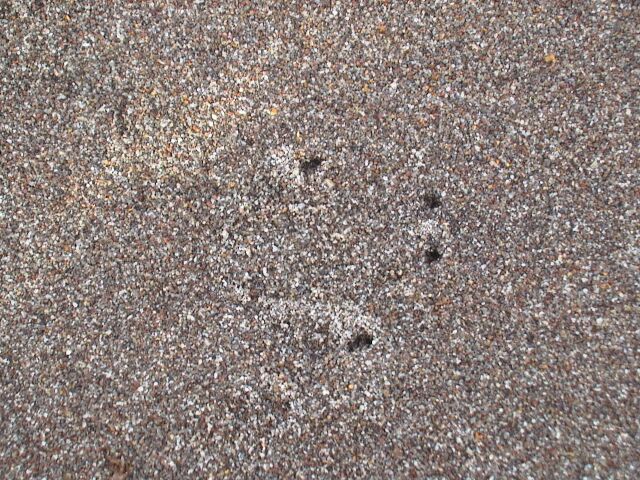
Here a fox tracked fresh dirt over a crust of fine silt laid down during a winter flood.
A trot appears to be the most common gait though walks and gallops are often found.
Here the stride is 29" and the straddle only 3". Compare this narrow straddle to typical
bobcat measurements.
Near Mt. Hood Meadows we followed a single set of fox tracks in the snow for a ways until
it split into two sets. Close inspection showed that one set had a shorter stride and
smaller tracks suggesting a mated pair. On our way back, we realized that as our group
dipped down into a bowl looking for tracks that the foxes were working their way up the
slope. They looped around, crossed our tracks, and went back down the slope as we
we started back up.
This fox feasted on a Canada Goose.
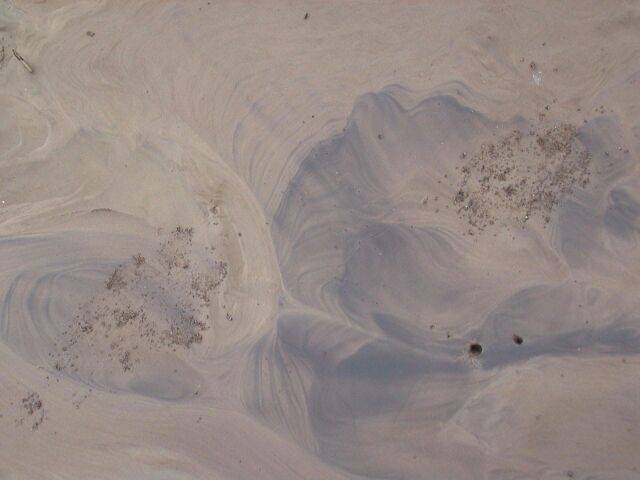
Gait
Trot
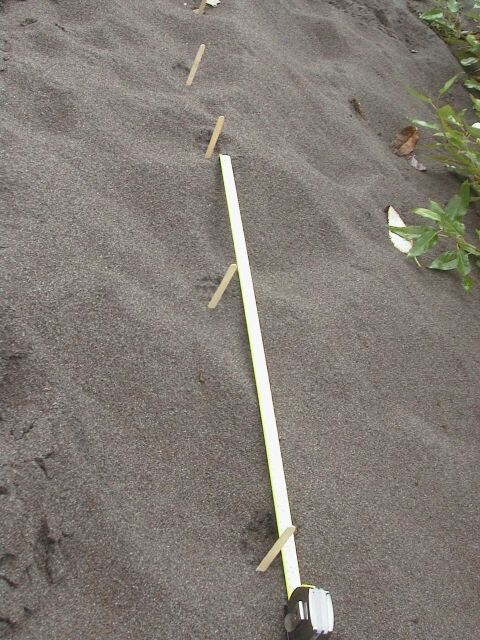 A red fox (and sometimes a mate) frequent the flood plain of the Sandy River in Oxbow Park
west of Portland. On every visit to the area, one can see a different story in the sand.
A red fox (and sometimes a mate) frequent the flood plain of the Sandy River in Oxbow Park
west of Portland. On every visit to the area, one can see a different story in the sand.
Side Trot
As with other canines (even dogs) the fox will often use a side trot. As he turns his head
to the left or right, the hind feet swing to the opposide side of the front feet.
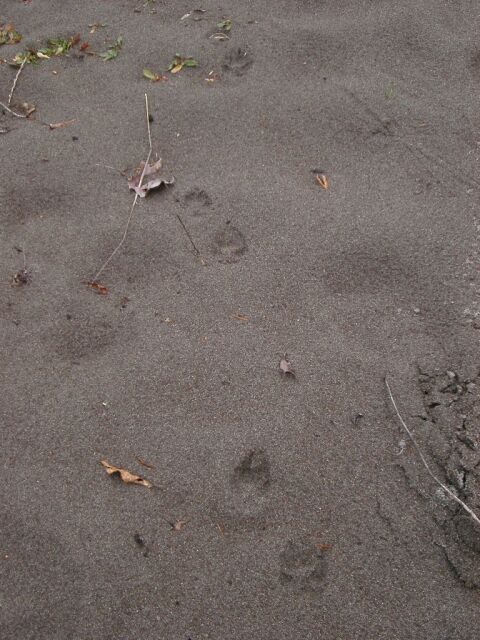
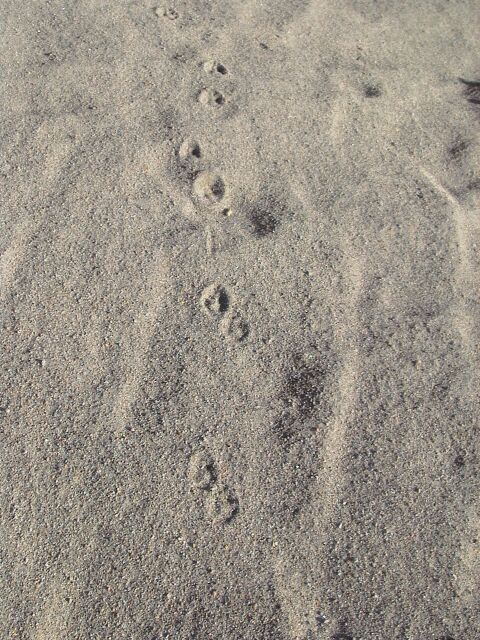
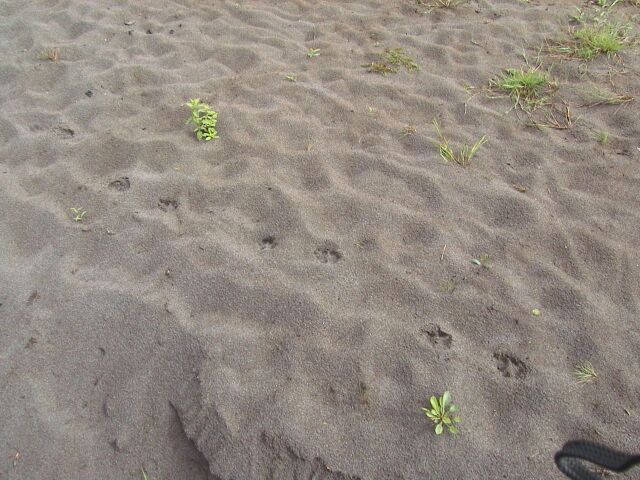
Gallops
Gallops, especially lopes, are occasionally seen but I have yet to get a satisfactory photo.Snow
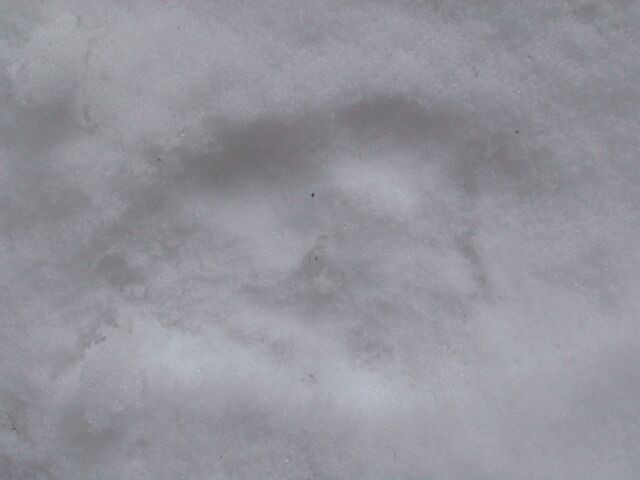
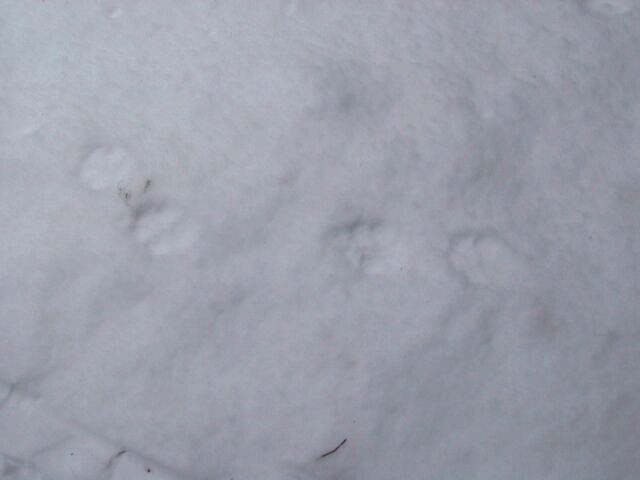
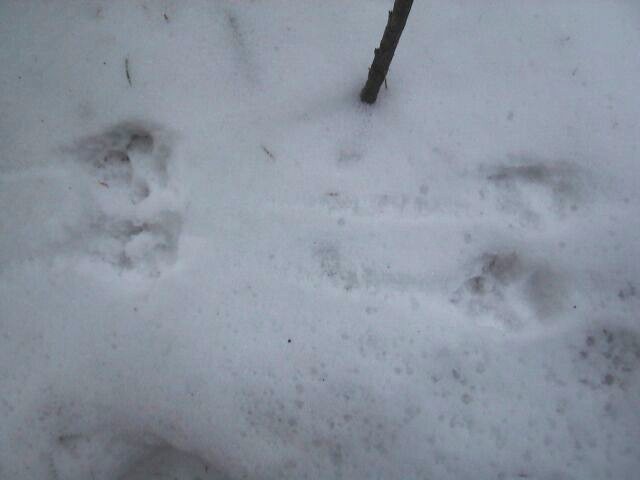
Hunting
Here the fox pounced on a mole burrow.